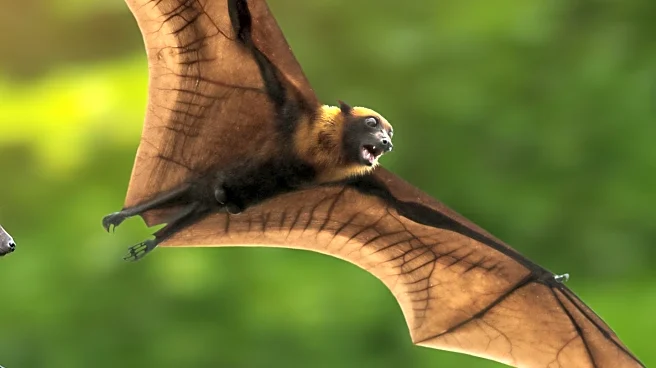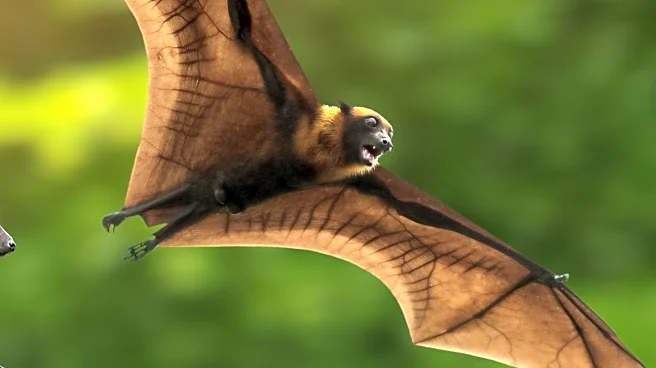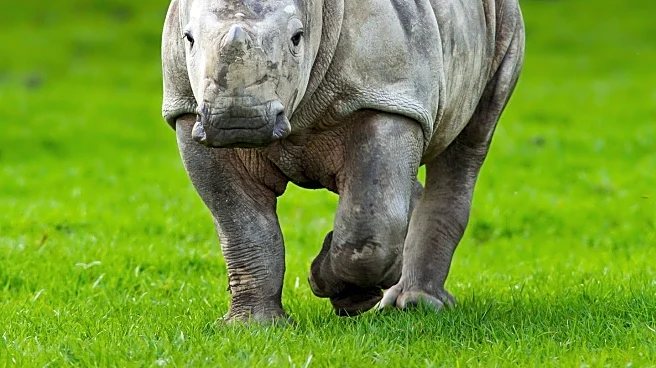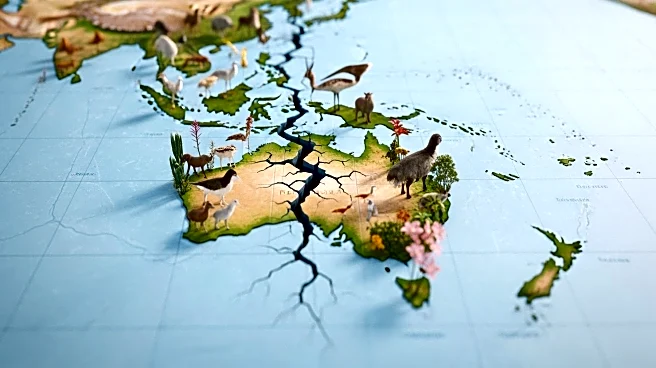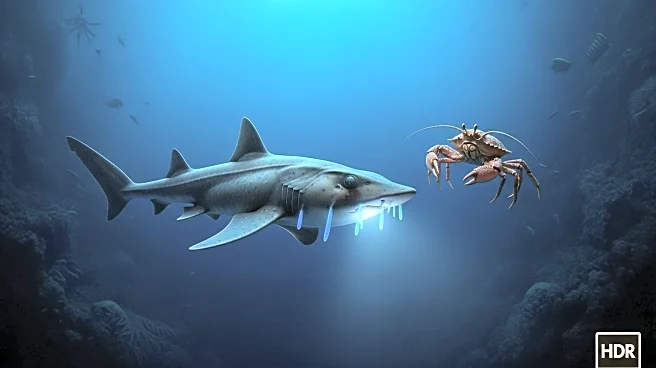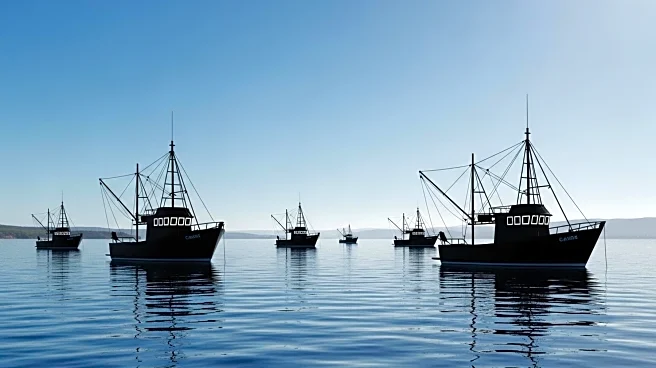What's Happening?
A mail carrier named Wayne in Australia discovered a baby grey-headed flying fox clinging to its deceased mother during his delivery route. Concerned for the baby's safety, Wayne contacted Wildlife Victoria for assistance and took immediate action to protect the young bat. He covered the baby and its mother with a box and left a note instructing others not to disturb them, indicating that Wildlife Victoria was on the way to pick up the injured bat. Wayne's dedication to checking on the box periodically ensured the baby bat remained safe until rescuers arrived. The baby, named Little Wayne in honor of the mail carrier's efforts, is now under the care of Joey and Bat Sanctuary (JABS), where it is thriving and receiving specialized care.
Why It's Important?
The actions taken by Wayne highlight the importance of community involvement in wildlife conservation efforts. By taking initiative, Wayne ensured the survival of a vulnerable species, the grey-headed flying fox, which plays a crucial role in pollination and seed dispersal in Australian ecosystems. This incident underscores the impact individuals can have on wildlife preservation and the importance of prompt action in rescue situations. The story also brings attention to the work of organizations like JABS, which provide essential care and rehabilitation for injured wildlife, contributing to biodiversity conservation.
What's Next?
Little Wayne will remain at JABS until he is old enough to be released back into the wild. The sanctuary will continue to provide him with the necessary care, including a specialized diet and comfort items like a teddy bear and pacifier. As Little Wayne grows, he will be prepared for eventual release, contributing to the local ecosystem. The story may inspire more individuals to engage with wildlife rescue efforts and support organizations dedicated to animal welfare.
Beyond the Headlines
This event highlights the ethical responsibility humans have towards wildlife, especially in urban environments where animals are often displaced or endangered. It raises awareness about the challenges faced by wildlife due to human activities and environmental changes. The story also emphasizes the cultural value of compassion and proactive behavior in safeguarding nature, potentially influencing public attitudes towards wildlife conservation.

